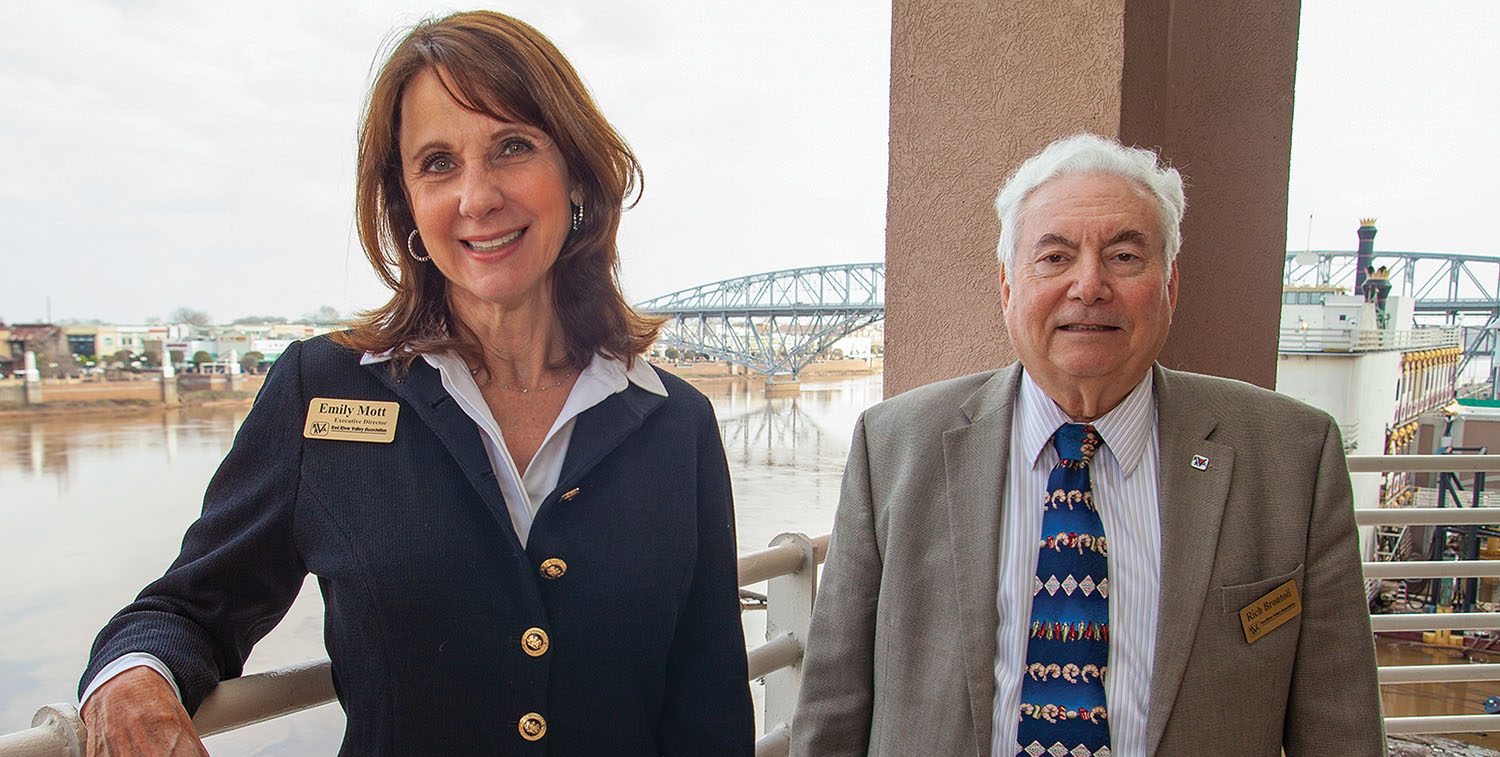Stakeholders of the Red River Valley and navigation along the J. Bennett Johnston Waterway, which stretches from Shreveport, La., down to Old River Lock at the Mississippi River, gathered February 22–23 in Shreveport for the 98th annual convention of the Red River Valley Association.
As in years past, the convention agenda included reports from U.S. Army Corps of Engineers districts affecting the waterway, along with regional issues related to business, industry, navigation and agriculture.
This year carried a special significance, with the recently announced retirement of Richard Brontoli, who had served as executive director of the association since 1993. Brontoli came to the association after retiring from the Corps of Engineers, having last served in the St. Louis Engineer District.
“Today, we celebrate the retirement of one of the most distinguished colleagues, executive director of the Red River Valley Association for the past 30 years, Mr. Rich Brontoli,” said Dan York, president of the association. “As we stand here today, we’re reminded of the countless contributions and achievements that Rich has brought to our organization. He has been a visionary leader.”
York noted how Brontoli remains with the association in a consulting role as he assists the association’s new executive director, Emily Mott. He is also closely involved with the feasibility study focused on extending the Red River’s navigable channel into southwest Arkansas, York said, calling those efforts “yet another example of his unwavering commitment of services and dedication through his 30 years at the helm.”
Col. Andy Pannier, deputy commander of the Mississippi Valley Division, began his report by recognizing Brontoli.
“When I heard 30 years, I had to think back to 1993 when I enlisted in the Army as a private,” Pannier said. “If I think about what has transpired in those 30 years, it’s truly a testament to the man you are. It’s a huge accomplishment to be in a position that long, and truly I think you are a hero and a mentor to all those coming up.”
Col. Christopher Klein, commander of the Vicksburg Engineer District, then concluded his report by recognizing Brontoli for his years of service and presenting him the Commander’s Award for Public Service.
“This is a gentleman who is committed to a lifetime of service to the nation,” Klein said of Brontoli.
Reflecting On 2022
Last year was a busy year for waterway managers and industry along the Red River. Thanks to the waterway’s system of locks and dams, the Red River was spared much of the critically low river levels that restricted navigation on the Mississippi River. Still, maintenance closures at Lindy C. Boggs Lock on the Red (also called Lock 1) and at Old River Lock generated a lot of attention and close coordination between the Corps and other waterway stakeholders.
Ronnie Morrow with the Vicksburg District’s structures section overviewed the maintenance work at Lock 1, which included replacing timbers on the miter gates, conducting welding repairs, media blasting the gates and installing new cathodic protection. Corps crews also noted some significant engineering issues like cracks along the bottom girders and misalignment of the lower miter gate. Both issues, Morrow said, will worsen over time and have to be addressed in the future.
Besides lock maintenance at Boggs Lock, tainter gate issues also caused angst at that structure last summer, with the Corps activating an emergency operations center to address corroded and failing tainter gates. Klein reported that the base construction contract for Lock 1 tainter gates was awarded January 25. The contract, he said, is for five of the 11 tainter gates, with an option for a sixth.
As maintenance work at Lock 1 progressed, another concern emerged: low water in the gauntlet between Lock 1 and Old River caused extreme shoaling, which threatened to effectively keep the channel closed after the lock reopened. Klein said the district was fortunate to be able to deploy the dredge Dubuque from drydock to the Red River just in time.
“It ran up the Red River to address the dredging needs south of Lock and Dam 1,” Klein said. “So it’s great to have that asset now and available on the tributaries, as well as on the Mississippi River.”
Other speakers at the Red River Valley Association’s annual convention included Julie Ufner, president and CEO of the National Waterways Conference, who discussed the upcoming Water Resources Development Act of 2024 and what’s on the horizon for the McClellan-Kerr Arkansas River Navigation System (MKARNS). Bruce Lambert with the Maritime Administration highlighted different programs his agency oversees that support navigation and the maritime industry. Cindy Cutrera, economic development manager for the Port of Morgan City, La., then discussed the United States Marine Highway Program, the M-49 that extends the length of the Red and Atchafalaya rivers and recent successes her port has had dredging the Atchafalaya River bar channel.
Brian Thomas, partner and CEO of Carbon Rho, an organization developing a carbon credits system and strategy, discussed how his team plans to offer carbon offsets connected to forestry and industry along the Red River.
The Red River Valley Association has posted presentations from the convention on its website: www.rrva.org.




